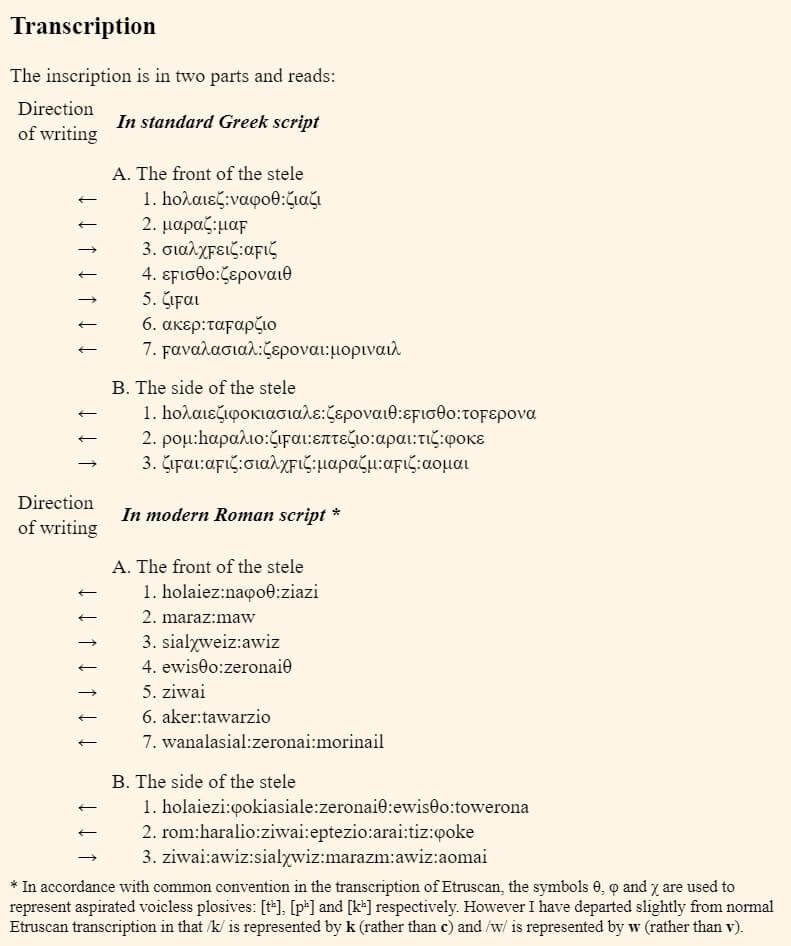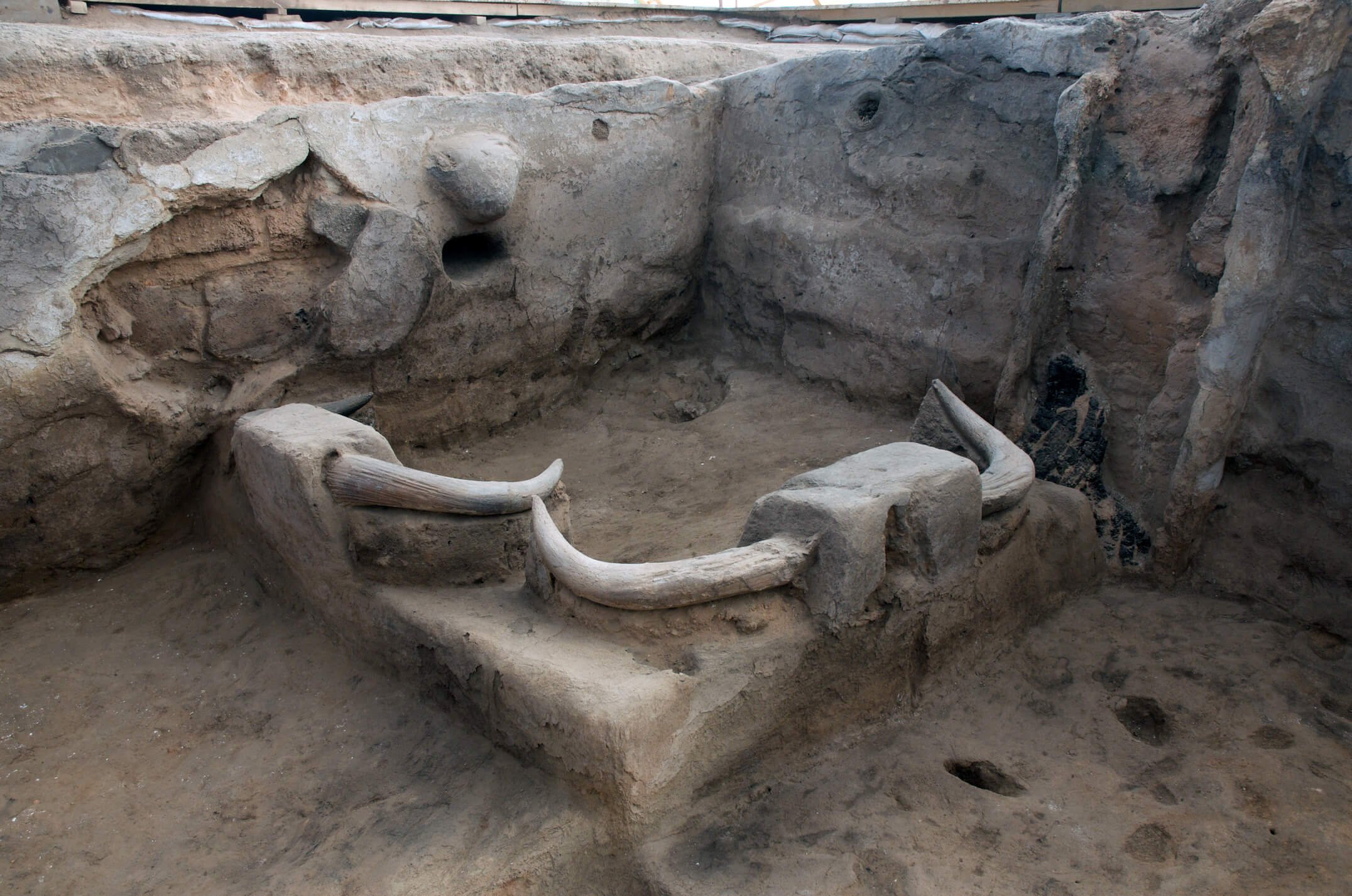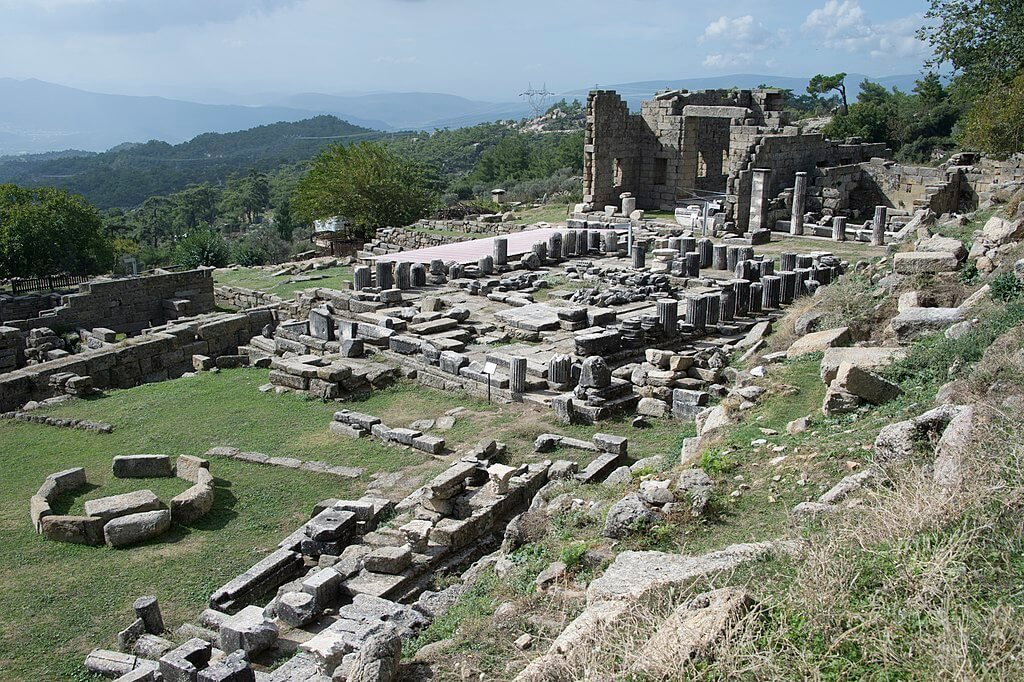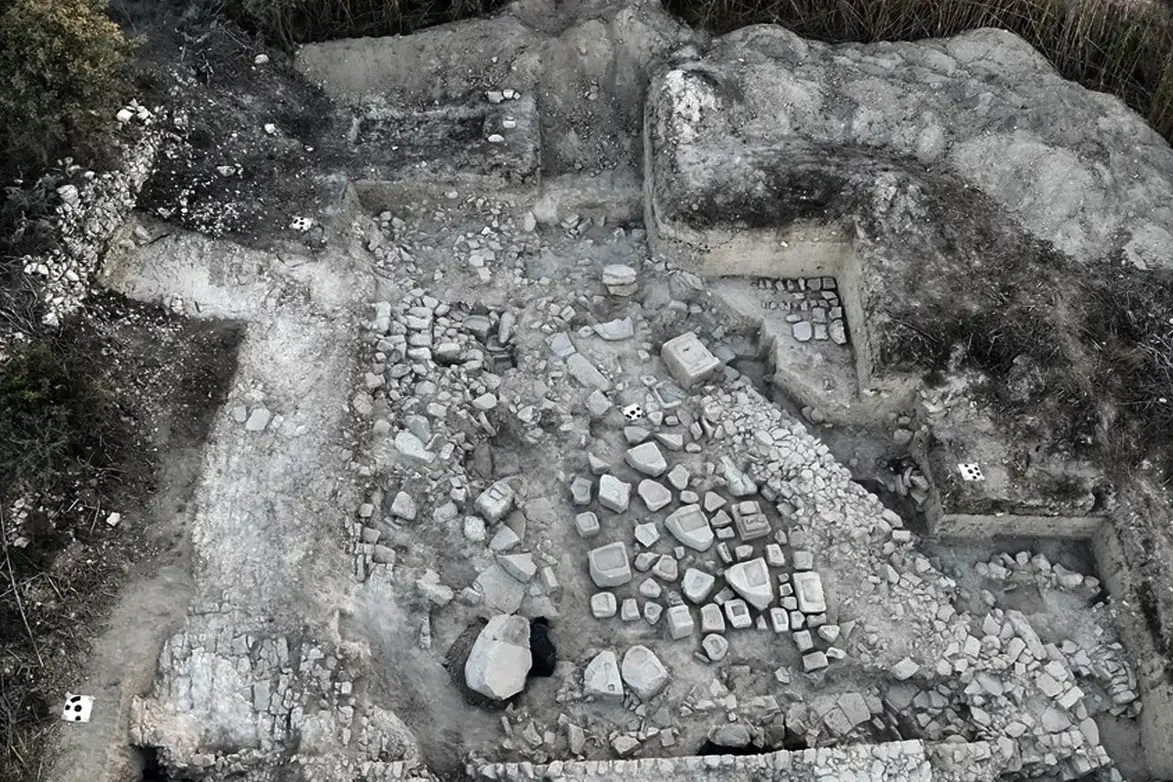Deconstructing Theories of External Imposition
The recent study of the cemetery at Sissi in Crete reveals a unique ritual practice of the Minoans, interpreted as the symbolic "death" or closure of their tombs. Instead of gradually abandoning the communal graves, the inhabitants of Sissi, around 1700 BCE, undertook a deliberate and ritualized process marking the end of an era.
Specifically, the last dead were buried in small pits or ceramic vessels. Afterwards, they carefully dismantled the tomb walls, crushed some bones to blend with the soil, and celebrated with a large communal feast. The findings include thousands of pottery fragments, remains of cups, and kitchenware, all dated to the same period. These elements suggest a collective ceremony that signaled the final use of the burial grounds.
Figure 3. The archaeological site of Sissi, seen from the north. The white dotted line indicates the limits of the cemetery (Zones 1 & 9) (© Belgian School at Athens, N. Kress).
Finally, participants covered everything with a layer of soil and stones, sealing the site forever. Remarkably, centuries later, when burials resumed in the area, this specific location remained untouched, indicating a lasting respect for this ritual closure. This practice reflects a profound cultural transition and a conscious effort by the Minoans to close a chapter of their history with reverence and ritual significance. The discovery offers valuable insights into the social and religious perceptions of the time and enriches our understanding of Minoan civilization.
The practice of ritually "closing" significant spaces through careful burial and continued respect for tomb or building grounds is also observed in the prehistoric Aegean world. The case of the House of the Tiles at Lerna and the recent discoveries at Sissi in Crete demonstrate the same symbolic logic: the need for a conscious transition and an honorable disengagement from a past charged with social and sacred meaning.
Figure 1. Distribution of Prepalatial and Protopalatial tombs, with the location of the main cemeteries mentioned in the text (S. Déderix).
At Lerna, after the destruction of the House of the Tiles around the end of Early Helladic II (ca. 2400–2200 BCE), the inhabitants carefully emptied the building, set it on fire, and then erected a mound (tumulus) of 19 meters in diameter over its remains. This tumulus was demarcated with a stone ring, and for a significant period during the Early Helladic III phase, no new structures were built atop it—testifying to a profound respect for the space and the historical memory it embodied. A similar ritual strategy, with many parallels, is evident at Sissi.
This analogy suggests that both in mainland Greece and Minoan Crete, the societies of the Late Early Bronze Age did not experience change through violent external impositions but through internal processes of renewal, deeply rooted in a ritual understanding of time, memory, and space. This organized and respectful treatment of earlier monumental architecture stands in contrast to the traditional image of violent invasions or external elite dominance, once assumed by older theories regarding the arrival of the "Proto-Greeks" (in the case of mainland Greece).
Instead, it indicates that the local communities themselves chose to manage the end of an earlier social and political phase through conscious, ritualized closure. Building and maintaining the tumulus can be seen as a way for the community to remember their past and show their pride, without any signs of new power being forced upon them from outside.
Caskey, J.L., Blackburn, E.T., Lerna in the Argolid. A Short Guide, American School of Classical Studies at Athens, Athens, 1977. © American School of Classical Studies at Athens
Furthermore, the collapse of the "Corridor House" system was not immediately followed by the rise of new, stronger elite centers, but rather by a phase of social simplification and fragmentation, as indicated by the emergence of apsidal buildings and changes in burial practices. This gradual and endogenous transformation better aligns with scenarios of internal social evolution rather than models of abrupt external domination.
Thus, the cultural changes observed at the end of the third millennium BCE appear to be more closely tied to transformations in local economic, social, and ritual practices rather than to the arrival of foreign populations or imposed systems. The Early Helladic III culture, although distinct from its predecessor, nonetheless shows strong elements of continuity, reshaping and integrating the past through internal processes.
The situations in Lerna and Sissi help break down ideas about quick takeovers or outside influences and improve our understanding of prehistoric communities as active participants in deliberate local cultural changes, where managing space and memory was very important.














































































































